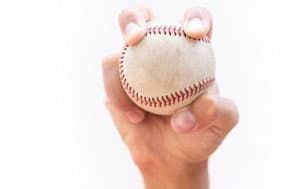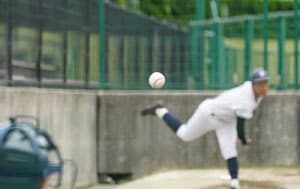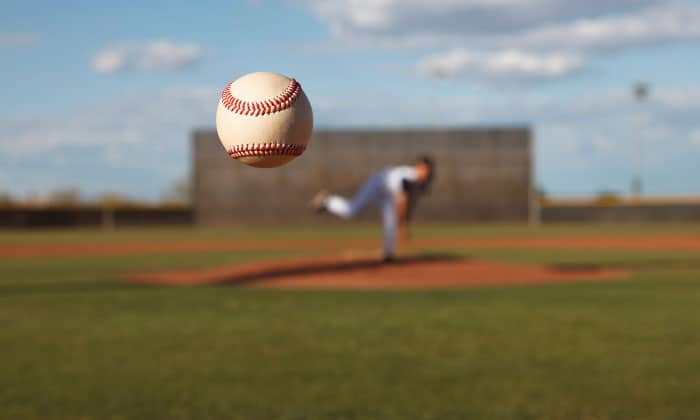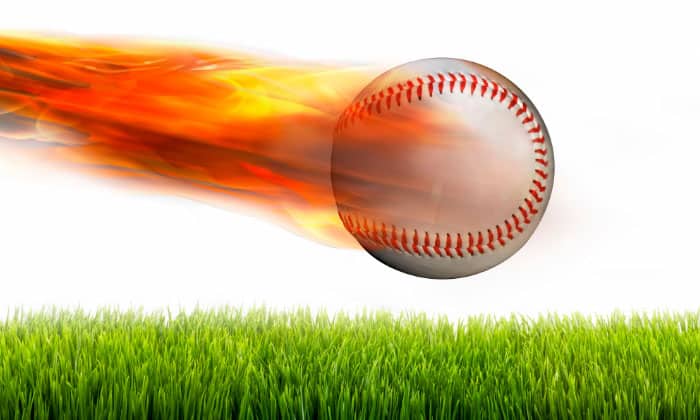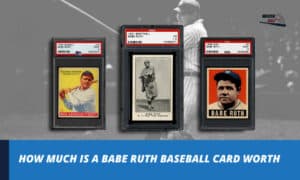Knowing how to throw a baseball harder is vital for every baseball player. Whether you’re a pitcher, catcher, or fielder, learning to throw harder and farther will give you the edge come game time.
While it may seem downright easy, it takes more than just muscles and sheer power to make a hard throw in baseball. Specific techniques are required to enhance throwing power and velocity. In this article, we’ll let you into the secrets of throwing faster and harder in baseball.
Contents
The Basics of Throwing Hard in Baseball
It is a common misconception that throwing a baseball faster and harder requires much strength. While it helps to have some muscles, relying on throwing power alone will not work. In fact, you can even end up with a debilitating injury if done the wrong way.
Throwing hard in baseball relies mainly on mechanics. You need to learn the correct form, grip, and release. They may seem like minor stuff, but when done correctly, they will enable you to pitch harder and deliver the best throws without tightening up those muscles.
So loosen those arms, relax your body, and get ready to learn how to properly throw a baseball!
What to Prepare
No special equipment is required to learn to throw a baseball harder. All you need are the following:
- A baseball
- A baseball glove
- Activewear or comfortable clothes
- Rubber shoes
- A throwing buddy
Steps to Throw a Baseball Harder
The exact mechanics apply when producing power throws, whether you’re pitching or fielding in baseball. You may have more time to prepare if you want to throw harder as a pitcher, but the throwing process typically takes only two to three seconds to complete.
That is particularly true if you’re fielding the ball to put out a runner attempting to move up a base. Every second matters, so these same steps apply in baseball pitching or if you simply want to deliver faster and more accurate throws when fielding the ball.
Step 1: Take the proper starting stance.
The correct throwing form begins with stuffing the ball into your glove as soon as you catch it. The glove should be held in front of you at chest level.
With your feet slightly apart, shift both legs into the throwing position by aligning them toward the target.
Next, bend your knees slightly while keeping your back and spine straight. Make sure to plant your feet firmly on the ground for better balance.
Keep practicing this short exercise of finding the correct stance until it becomes second nature every time you catch the ball.
Step 2: Find your grip.
Pitchers work with a variety of grips for different power throws, but the four-seam grip seems to be the best option if you’re throwing the ball from the outfield. It is also the grip of choice, even if throwing from the infield because it produces the straightest and most accurate trajectory.
Rotate the ball with your throwing hand stuffed in your glove to grip a four-seam, so your index and middle fingers rest on the upper seam. Your thumb, ring, and pinky fingers should cradle the ball on the opposite end.
Don’t grip the ball too tight or hold it deep in your palm—there should be some space between the ball and the curved section between your thumb and index finger. This ensures an easy and seamless release without needing to throw very hard.
Step 3: Align your body towards your target and generate momentum.
Bring your non-dominant leg (the leg opposite your throwing arm) up front and turn your shoulders towards your throwing direction. While your legs and shoulders are aligned with your target, your feet shouldn’t be pointing in the same direction. Instead, they should be parallel to your chest.
Next, raise your front elbow, so it aligns with your target. Then, with your eyes fixed on the target, shuffle both feet forward while leaning slightly backward as you lower your throwing arm with the ball pointing downward.
You can adjust your shuffle depending on the distance you need to throw. For example, you can drag your feet just about a foot forward for short distances or up to three feet to gain more momentum for longer throws.
Step 4: Rotate your upper body and prepare to release the ball.
When the time comes for you to raise your throwing arm, you need to rotate your hip and torso forward at the same time. Your front ankle will pivot towards the target at the end of your shuffle as a result of this action.
The elbow of your throwing arm must be cocked at a 90-degree angle as you raise it prior to releasing the ball. Also, ensure your chest is aligned with your target and your glove is in front of your chest just before the release point.
Step 5: Release the ball and follow through.
Keep your body moving but stop pivoting when you have fully extended your throwing arm forward over your head. This is when you should release the ball with a slight whip on your wrist in the direction of your target.
The ball should easily roll off your fingertips, with the downward snap delivering some extra power.
Follow through by allowing your body to move forward naturally and your throwing arm to extend towards the opposite hip. Maintain your balance by holding your glove across your chest.
Workouts to Throw a Baseball Harder
Besides practicing the steps mentioned above on the correct way to throw a baseball harder and more accurately, specific exercises are designed to improve throwing strength and accuracy.
While the arms may appear to be most crucial in throwing a baseball faster and harder, they merely guide the ball toward your target. The truth is that most of the power involved in throwing comes from the lower body.
The best throwers in baseball use their quads, hamstrings, glutes, and hips to transmit force from the ground to their throwing arm via the torso. Here are four suggested workouts to strengthen the lower body and help you throw harder in baseball:
- Block Deadlifts – strengthen the core and upper back, build more muscular legs, and train you to apply force to the ground
- Goblet Dumbbell Split Squats – build stronger quads and develop arm-leg coordination without stressing the shoulders
- Med Ball Scoop Toss – boosts rotational power when throwing without distressing or injuring the arm
- Lateral Jumps – help develop knee and ankle stability
FAQs
What are the different types of throws in baseball?
Throws in baseball are better known as pitches. The most popular is the four-seam fastball, which pitchers and fielders often use as the best way to throw a ball straight and hard. It is usually recommended for beginners and young players.
Other throws include the two-seam fastball, the curve ball, the cutter, and the changeup. The sinker, splitter, and slider are highly technical throws that are more challenging to execute.
How fast should a 15-year-old throw a baseball?
When it comes to average youth baseball pitching speeds, a 15-year-old should be able to throw at an average of 70-75 mph. A senior leaguer throwing above this speed has the makings of a future pitching sensation.
What makes pitchers faster and harder?
A 1999 collaborative study spearheaded by the American Sports Medicine Institute indicated that greater external shoulder rotation coupled with increased forward trunk tilt upon ball release enables pitchers to throw faster in baseball.
Of course, this is in addition to physical attributes such as muscular, skeletal, and chemical buildup, which enable some pitchers to generate more power compared to others.
Conclusion
Learning how to throw a baseball harder is a must for every player on the team. Pitchers will want to throw batters off, while catchers and fielders must throw hard and fast to prevent runners from advancing or stealing a base.
Throwing a baseball faster and harder is a learned skill. It involves specific mechanics, which, when done correctly, all add up to increased strength, velocity, and accuracy. Otherwise, it can cost you the game. Even worse, it may result in needless injuries.

A powerful swing and the ball is flying across the field, just one hit, and we might never forget the thrill it brings. I do not know about you, but I never do. Every baseball game is the chance to compete with others and cooperate with your teammate. It is among my biggest passions.




